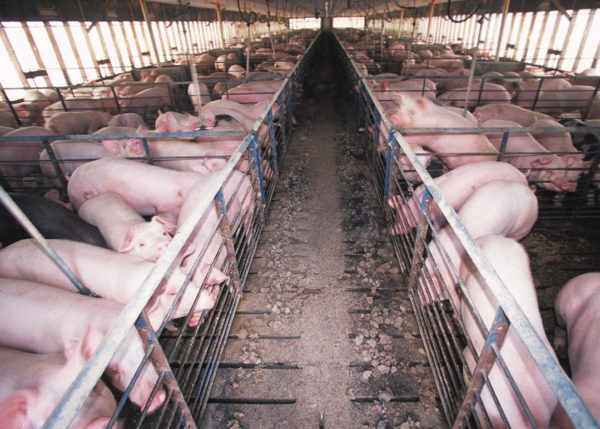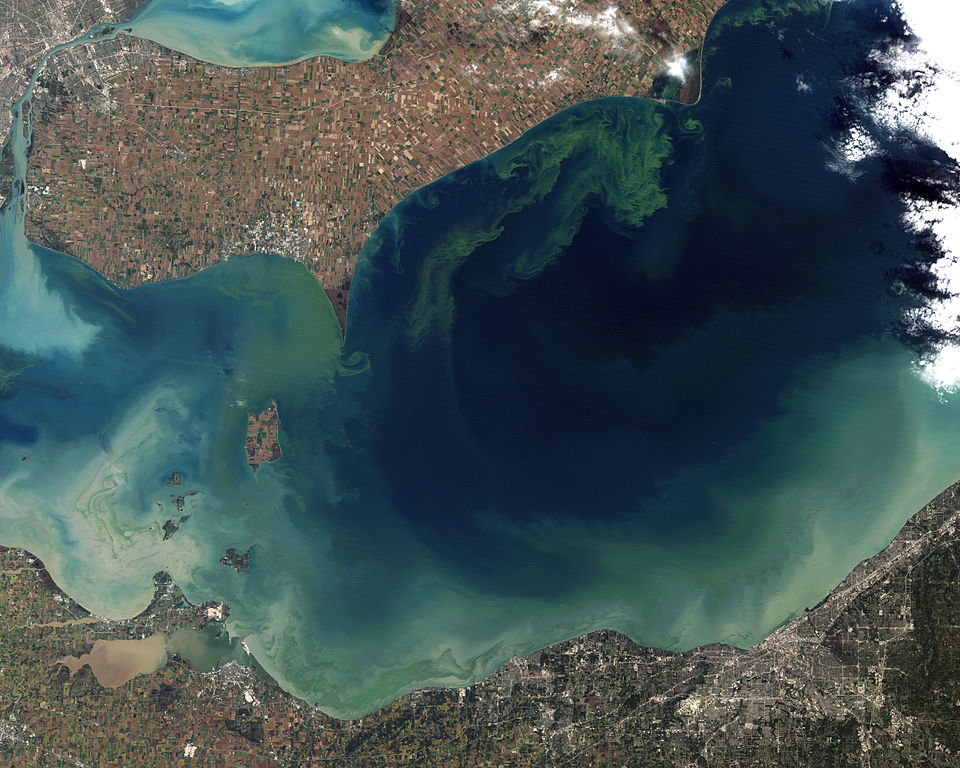This is also happening in the Amazon. Deforestation for livestock, or growing soy. The majority of soy crops are fed to livestock. So to maintain them, they deforest places to grow soy, and its all flowered up.
https://rodaleinstitute.org/blog/is-meat-ruining-the-planet/IS MEAT RUINING THE PLANET?A Frightening Trend

On factory farms, animals are raised indoors in confinement
In the last few decades, factory farms have taken over the global meat supply. These consolidated, large-scale operations each raise hundreds to thousands of animals every year. Their focus is on maximum production at the cheapest cost—and that comes at the expense of animal welfare and environmental health.
The prevalence of factory farms has increased as demand for meat and milk has grown across the globe, and that trend continues. Particularly as incomes increase in developing countries, so will demand for animal products. By 2050, global meat and dairy production is projected to increase more than 150%.1
Can our planet handle the burden? In 2017, the EPA reported that agriculture contributed nearly 10% of all greenhouse gas emissions, and livestock accounted for a full third of that.2 Animal feed production and processing contributes the bulk of those emissions, with manure next in line.3 It’s no secret that factory farming methods harm our air, water, and soil.
However, it’s a myth that animal agriculture has to be destructive or that we have to stop eating meat to save the planet.
It’s not the cow, it’s the how.The Unfortunate Facts of Factory FarmingAnimal Welfare ViolationsOn factory farms, or Confined Animal Feeding Operations (CAFOs), animals are often raised indoors under artificial light in small confinement pens. Sows raised for conventional pork production spend nearly their entire lives in crates where they cannot physically turn around. Hens are crowded into windowless buildings. Animals are overcrowded indoors or out.
Lack of pasture creates vast “manure lagoons” that create unsanitary conditions that, along with overcrowding, breed animal disease.
Modifications such as beak clipping and tail docking are common.
Environmental ViolationsIn the U.S. alone, factory farmed livestock produce 500 million tons of waste a year—that’s 17 times the amount of sewage produced by the entire U.S. population.45 Livestock manure is not required to be treated.
Factory farm manure pits are easily eroded in heavy rain or storms. During recent flooding in North Carolina, breaches at several factory farms dumped millions of gallons of hog waste—containing antibiotics, insecticides, and potential pathogens like salmonella—into the local water supply.
Factory farms feed corn and soy. The fertilizer used to grow those crops combined with excess nutrients from animal waste runs off into waterways. This creates algae blooms that suffocate aquatic life. Agricultural waste is a large contributor to these
“dead zones,” including the 900-square-mile span in the Gulf of Mexico.
 Human Health Concerns
Human Health Concerns80% of all the antibiotics produced in the U.S. are fed or administered to livestock. Frequent antibiotic use creates resistant bacteria that could lead to the outbreak of a superbug or other public health crisis.
Factory farms create noxious fumes that pollute the air and degrade quality of life for rural residents, particularly African Americans, Hispanics, and American Indians.
Against the GrainBeyond these most egregious problems, there are still others with factory farming. One is that the industrial livestock system is heavily dependent on grain. Pasture does not exist on factory farms.
For ruminants especially, like cows, that’s a problem. Cows’ digestive systems aren’t built for grain—they’re built for grass. Pigs, too, are foragers by nature whose genetics and instincts are to graze on pastureland, not soybean meal.
Perpetual grain feeding leads to health problems that require more antibiotics, leading to higher risks of antibiotic resistance.

Grain-fed animals also emit more methane. Between 1990 and 2005, U.S. methane emissions from dairy cow manure rose 50%. The EPA traced the increase in part to greater numbers of factory farms. Pasture-raised animals, on the other hand, produce manure with about half of the potential to generate methane.
Growing grain for feedlot animals is also an environmental strain. Corn and soybeans, the most common crops grown for feed, require literal tons of artificial nitrogen fertilizers and herbicides made by burning millions of tons of C02.12. The result is an increasingly unsteady climate, a food system saturated with toxins like glyphosate, and polluted air and water.
Factory farms and corn and soy fields also lead to deforestation. Grazing animals, however, can utilize marginal land otherwise unable to grow food.
Responsible livestock management can bring those marginal lands back to life.
The Organic DifferenceIt’s clear: Factory farming isn’t working out. The good news is that organic prohibits what factory farming allows.

To be certified organic, livestock farmers have to follow these rules:
No antibiotics or artificial growth hormones
Animals must be managed in a way that conserves natural resources and biodiversity
All feed must be 100% organic, and that means no glyphosate or polluting fertilizers
Animals must have year-round access to the outdoors
Many organic farmers also emphasize pasture health and utilize rotational grazing, a practice that could have a huge impact on global warming.
The Power of PastureGrass is powerful stuff.
Grass comes from soil. Soil is the bedrock of our entire world, but we’re losing it fast. If we continue to lose soil at current rates, we have fewer than 60 years remaining before global topsoils are depleted.13 We need the soil, and it needs us.

young girl with a cowSmart grazing can help the soil recover.
Left alone on a patch of land, animals like cattle and hogs quickly destroy all signs of life, compacting the soil as they go. The result is desertification, and nearly three quarters of North American dryland has been affected by the phenomena.
Other times the animals will eat only the tastiest plants and leave other plants untouched. The uneaten plants then flourish, dominating the landscape. The result is the spread of invasive species and unusable rangeland.
However, if animals are managed with rotational grazing, the environment sees big returns.
How it WorksGrazing encourages plants to send out more and deeper roots. Those roots are continually sloughed off to decompose in the ground, boosting soil biomass and fertility and sequestering carbon from the atmosphere. As the soil carbon matter increases, so does the land’s ability to hold water, preventing erosion and agriculture runoff.
One recent study has shown that converting cropland to perennial pasture managed regeneratively “[has] the side effect of storing more carbon in the soil than [the farm’s] cows emit during their lives.”15
Get this: If we applied strategic grazing to just 25% of our croplands and grasslands, we could mitigate the entire carbon footprint of North American agriculture.
And we don’t have to use prime pastureland to see these effects. Unlike energy-hungry crops that require fertile soil and ample water, animals can graze on subpar land otherwise unusable for growing food.
So, which would you choose? Beef, pork, chicken, or dairy from a feedlot; or food managed with care for the animals, soil, air, and water? If the latter, choose organic and grass-fed products whenever and wherever possible.
A Man-Made AlternativeThere is one other option. Laboratory-grown meat is a thing, and it’s almost ready for the supermarket.
Cell-cultured meats don’t come directly from animals but are made from animal tissue. They mimic the texture and flavor of real meat. Some environmentalists and animal activists think these new products are the answer, but others don’t agree. Some “fake” meats still rely on GMOs and biotechnology, and some have been found to contain traces of glyphosate.
Would you eat meat grown by scientists? Hop into the comments and tell us what you think.
How to Take ActionLab meat or not, if you’re ready to say no to factory farms and make the switch to regenerative beef, poultry, and pork, here’s how to do it:
Look out for new labels coming to market. Regenerative Organic Certification, Real Organic Project, and Savory Institute’s Land to Market are all good labels indicating that the animals were raised humanely and with respect for the land.
Purchase your animal protein directly from a local farmer. You can visit the farm, see how the animals are treated, and ask the farmer how they care for their soil. Find a farm at your local farmers’ market or search the directory at BuyFreshBuyLocal.org.
Eat vegetarian when you dine out unless the restaurant has specified that they source from organic and regenerative farms. The majority of meat available is factory farmed, so there’s a good chance that meat on the menu is the same.
Give a gift to Rodale Institute. Our research on pastured pork is helping the industry improve its practices, and all of our work is focused on enhancing organic research so we can find smarter solutions for human and environmental health. Do you want to see a world with fewer factory farms and more healthy animals, land, and people? Become a supporter today